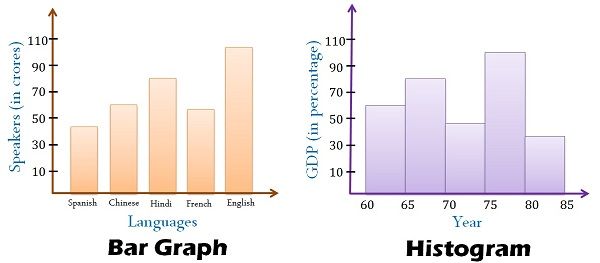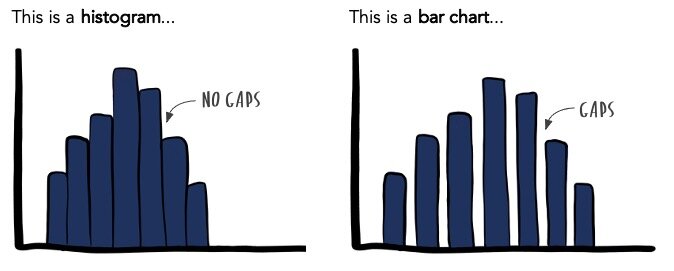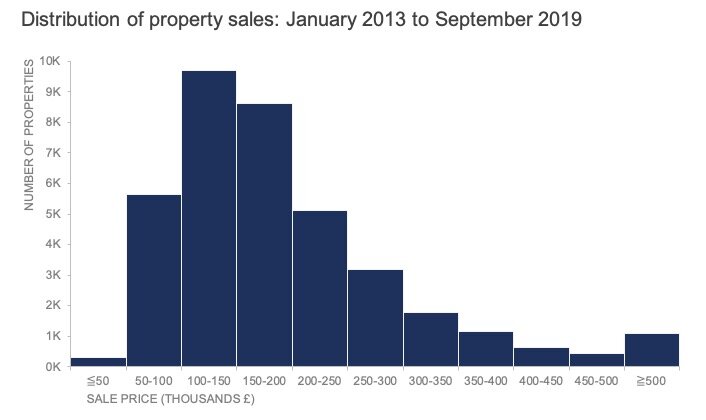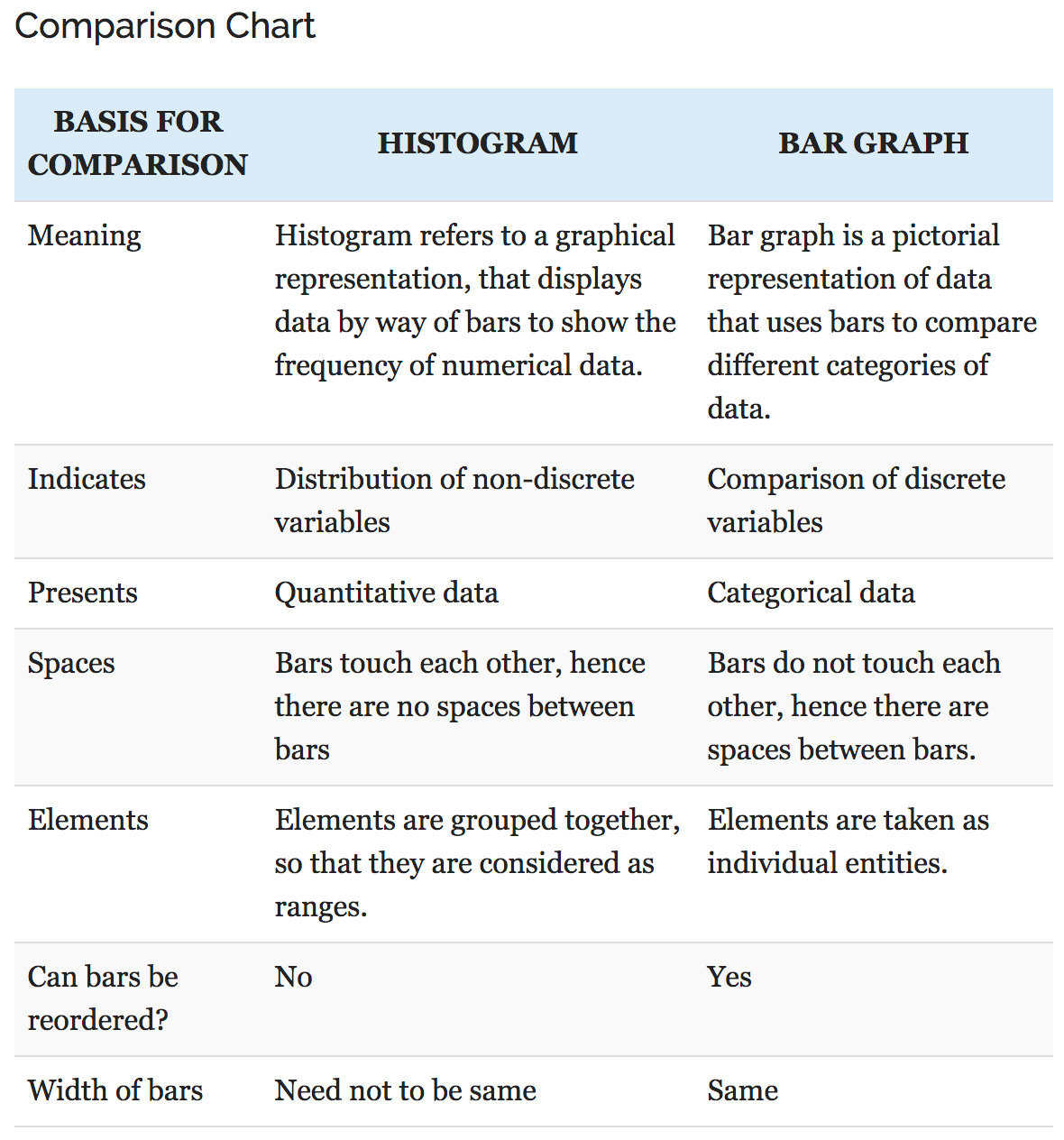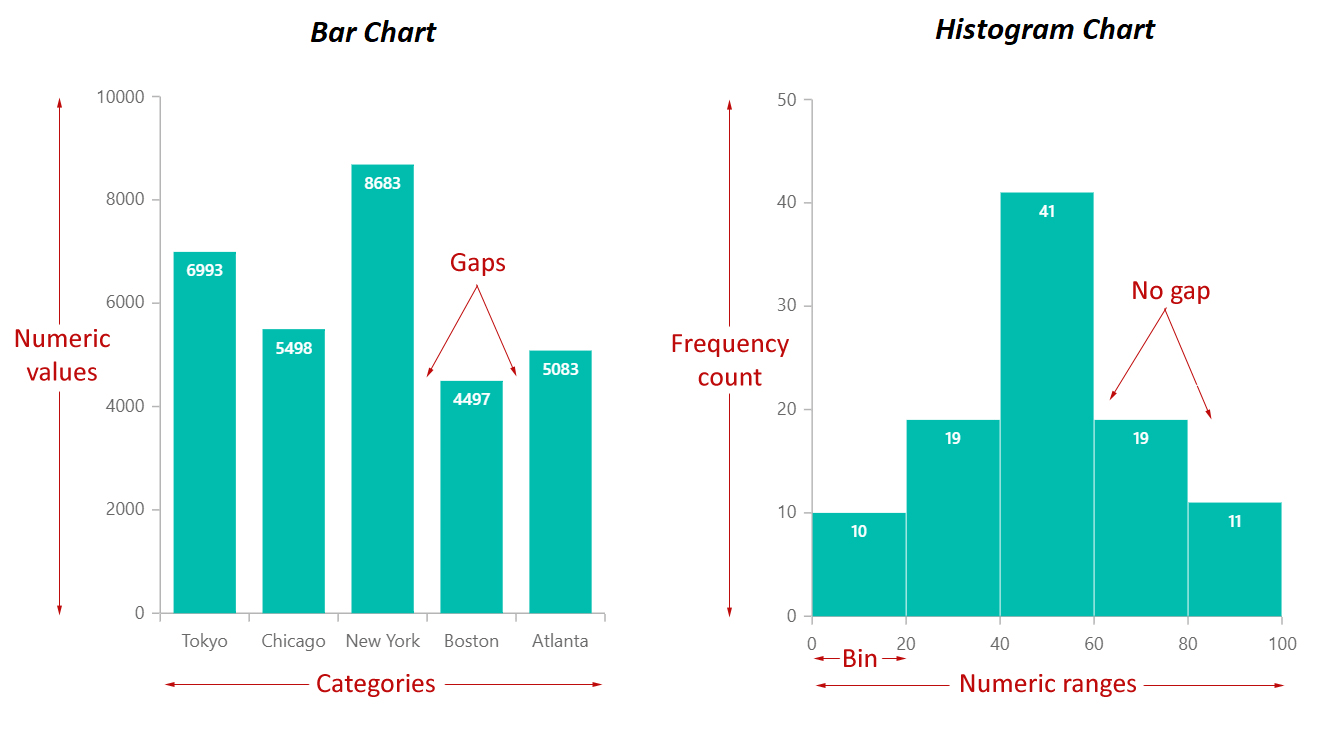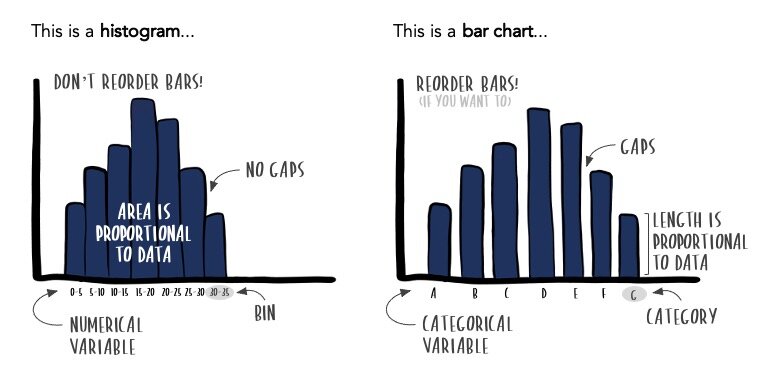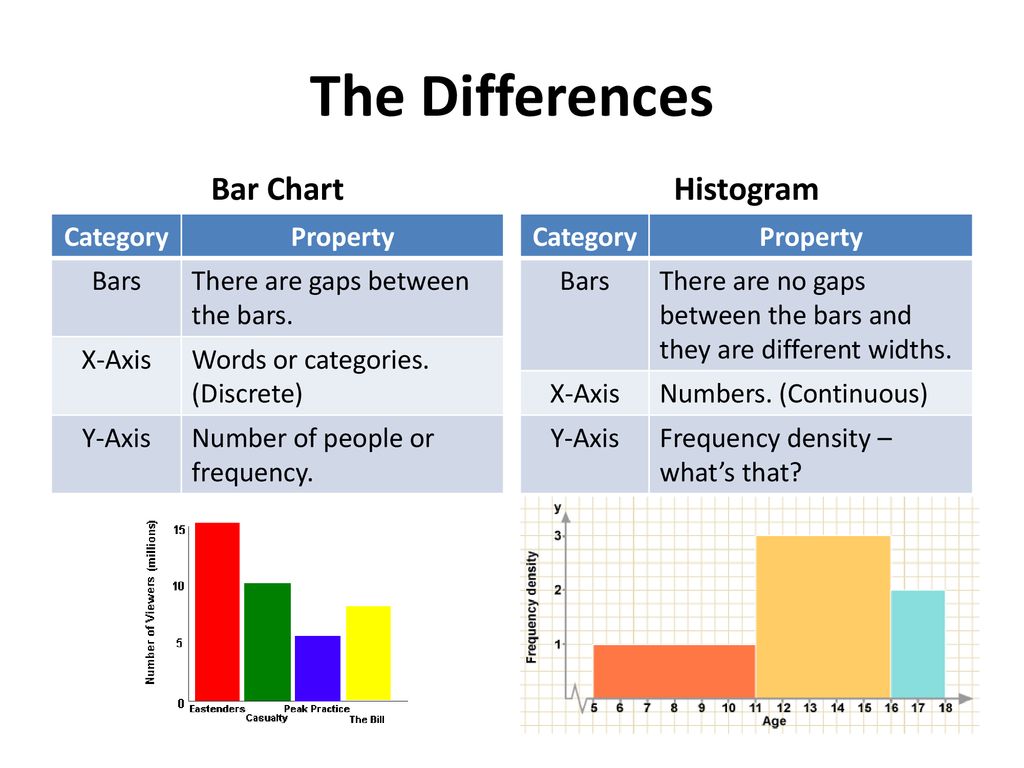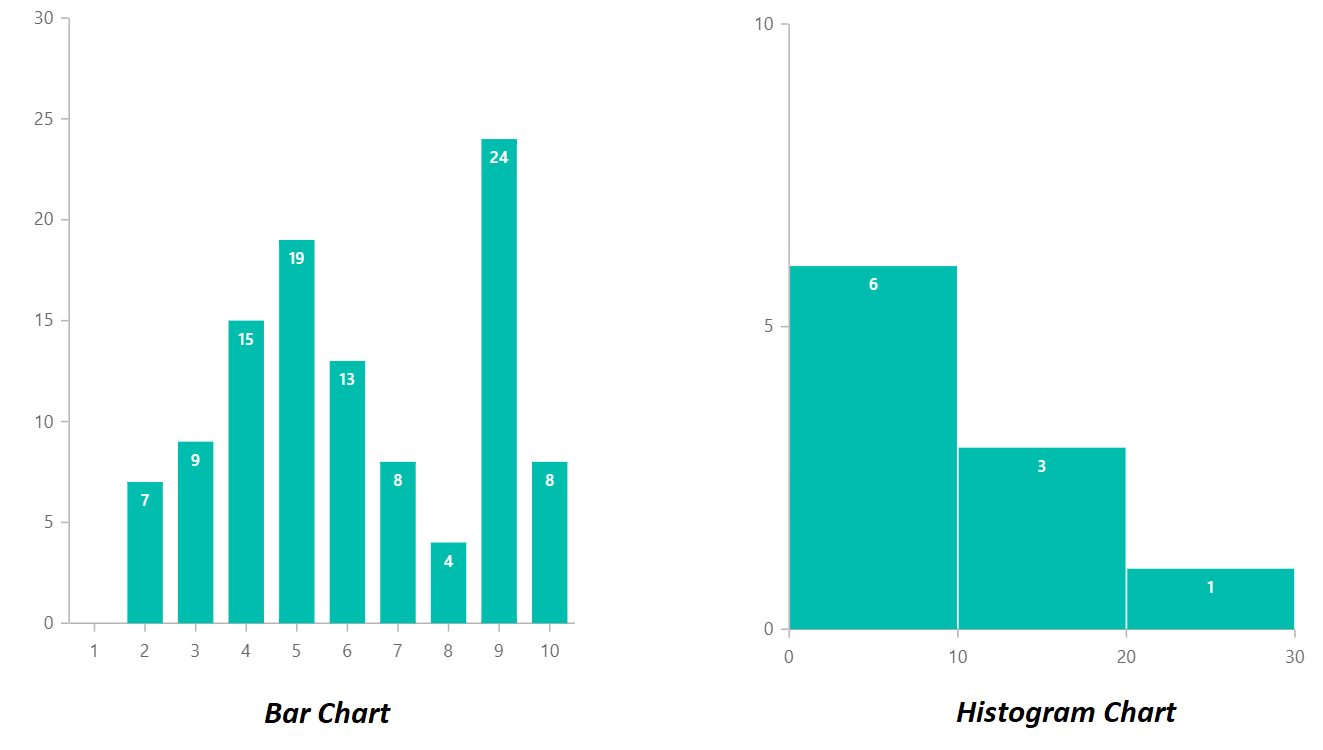What Is The Difference Between A Histogram And A Bar Chart?
The rectangles in a Histogram show the frequency of a numerical data range.
What is the difference between a histogram and a bar chart?. They should be attached to each other. Difference Between A Bar Graph And Histogram. Conversely a bar graph is a diagrammatic comparison of discrete variables.
We identified it from obedient source. The difference between bar graph and histogram- Histograms are used to show distributions of variables while bar charts are used to compare variables. Its submitted by dealing out in the best field.
For example the vertical bars need not touch one another as per a histogram. On a vertical bar graph as shown above the horizontal axis or x-axis shows the data categories. The x-axis can represent anything.
Whats the difference between bar chart and histogram. The bars in a Bar Chart represent the value of a particular category. The x-axis should represent only continuous data that is in terms of numbers.
Moreover one can determine the median and distribution of the data by making use of a histogram. A histogram represents the frequency distribution of continuous variables. Histogram presents numerical data whereas bar graph shows categorical data.
It is used to compare distinct entities. A bar graph may run horizontally or vertically. The difference between Bar Chart and Histogram is that histogram represents the frequency distribution of non-discrete series of variables whereas the bar chart represents the comparison of discrete variables.
Since they vary in purpose they plot data in different ways. It is used to compare the frequencies of data ranges or values that are consecutive and do not overlap. Histograms are used to plot quantitative data with ranges of the data that are grouped into bins or intervals while bar charts plot categorical data.
Here are a number of highest rated Difference Between A Bar Graph And Histogram pictures upon internet. Data points may be. Bar charts can be horizontal or vertical.
A Pareto chart uses a line graph as well. A Pareto chart named after an Italian economist combines a bar chart with a line graph. In most instances the numerical data in a histogram will be continuous having infinite values.
What is the difference between a bar chart and histogram quizlet. Explain the difference between the histogram and bar charts. The histogram is drawn in such a way that there is no gap between the bars.
Is histogram same as bar. When should you use dot plots Why. Equal space between every two consecutive bars.
The main differences between a bar chart and a histogram are as follows. Unlike bar charts that present distinct variables the elements in a histogram are grouped together and are considered ranges. In contrast a bar graph refers to a diagrammatic comparison of discrete variables.
The Histogram refers to a graphical representation that shows data by way of bars to display the frequency of numerical data whereas the Bar graph is a graphical representation of data that uses bars to compare different categories of data. A bar graph is used for displaying categories or classes of qualitative variables while histograms are used to display groupings of similar data values for quantitative data. A bar graph also known as a bar chart or bar diagram is a visual tool that uses bars to compare data among categories.
In Excel the vertical version is referred to as column chart. What is the difference between bar graph and bar chart. Dot plots are used for continuous quantitative univariate data.
No space between two consecutive bars. A bar chart also called a bar graph is a great way to visually display certain types of information such as changes over time or differences in size volume or amount. Histograms and bar charts display different types of data Histograms visualize quantitative data or numerical data whereas bar charts display categorical variables.

